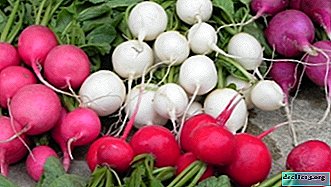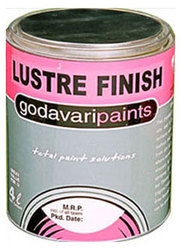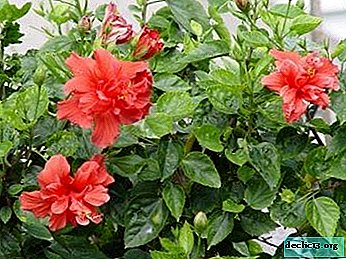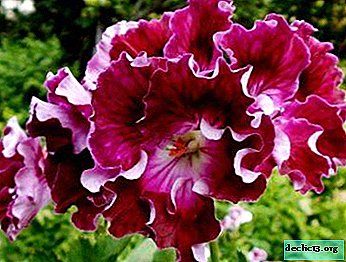How to bleach tulle from organza and kapron at home

There are a large number of window design options, but the favorite of many housewives is still white tulle. It refreshes the interior, filling with blinding whiteness. Over time, the product dims, acquiring a yellowish or gray tint. The question is, how to bleach tulle at home quickly?
Even washing does not always help to make the tulle lighter. This is due to street dust, sunlight, cigarette smoke and a kitchen burn. There is only one way out - whitening. This can be done in dry cleaning or independently at home.
Since the first option is more expensive, in the article we will consider ways to bleach tulle from organza and kapron material using folk methods and purchased chemistry. I'll start the story with helpful tips on whitening.
- So that when soaking in the material of which the tulle is made, dirt and dust are not absorbed, the product is previously taken out into the street and shaken well.
- In the case of severe pollution, the curtains are soaked until morning in water heated to 35 degrees with the addition of powder.
- Before bleaching, the tulle is washed. When machine washable, they are folded into a small rectangle, lowered into a pillowcase or special bag, and the delicate mode is activated.
- In order for the product to gain shine and shimmer in the sun, vinegar is added to the water at the rate of one dessert spoon per liter of liquid.
- After bleaching, the tulle is not twisted, not wrung out and not ironed. As soon as the liquid drains, the wet product is hung on the window. As a result, the folds are smoothed out under their own weight. If you can not do without ironing, the minimum temperature is used. Higher temperature conditions are fraught with the appearance of yellowness, not amenable to bleaching.
Below we consider home recipes that involve the use of available funds. They will help make tulle flowing, shiny and snow-white. With minimal effort at home, the windows will become beautiful and fill the house with comfort.
The fastest way to whiten

Many housewives who decide to bleach tulle quickly, want to get the best result with minimal time, effort and money. This way exists. Women used it in ancient times. It's about digestion.
Previously, everything was bleached by digestion, whether it was bedding, clothes or curtains. For tulle, the method is also suitable. For the procedure you will need an enameled bucket or pan of stainless steel, water, a bar of laundry soap, laundry detergent, a little bleach and a wooden stick.
Please note that the method is suitable for bleaching products from flax or cotton material.- Fill the container with water so that there is room for tulle. Add the soap washed through the grater, a little powder and bleach. If you put pieces of soap, it will dissolve for a long time. Put the dishes on the stove and turn on a strong fire.
- After boiling the liquid, put the tulle in the container. Stir the contents of the pan periodically using a wooden stick. This simple technique will speed up the process of exfoliation and color recovery.
- The duration of digestion is determined by the degree of contamination. Usually two hours is enough. After the time has elapsed, remove the tulle and dip it in a container of cold water.
- After rinsing, hang the tulle over the bathtub to glass the water. A little later, wet the product hang on the ledge. It is not necessary to squeeze out, under the own weight the folds will be smoothed out.
Video instructions
I think you are convinced that this grandfathering technique is simple and does not require large cash investments. With its help, in a few hours, eliminate yellowness and make the tulle snow-white.
An effective way to whiten in a washing machine

A variety of specialized products are sold in stores that help bleach tulle quickly. If you use a washing machine to control gray deposits and yellowness, remember that chlorine-based products are not suitable. Their use will lead to damage and curtains, and household appliances. Fortunately, safer products are sold that are suitable for delicate and delicate fabrics, fashionable clothes, and carpet cleaning.
Oxygen-containing bleaches contain hydrogen peroxide and can easily cope with yellowness and gray without damage to the washing machine and fabric structure. The composition of optical brighteners includes luminescent molecules, which under the influence of light create a whiteness effect. They are also suitable for machine whitening. What if there are no such funds? There is an exit.
- To bleach the tulle in the washing machine, add a little ammonia to the compartment with washing powder. A few drops are enough.
- If there is no ammonia, use hydrogen peroxide in the form of tablets. Depending on the degree of contamination, put 5-10 pieces in the compartment.
- Activate the delicate wash mode and set the timer for half an hour. Do not use spin.
This method is ineffective in the fight against stubborn stains, but it will help to cope with yellowness. And if you do not want to fight yellowness, do not allow severe pollution. To do this, wash the tulle once a season. It's enough.
How to bleach tulle folk remedies

Over time, the snow-white tulle acquires a grayish-yellow hue under the influence of various factors. Impatient housewives, eager to quickly fix the situation, are thinking about buying new tulle curtains. It is not necessary to resort to a hasty purchase.
It is real to return pristine whiteness without big financial expenses. Helped folk remedies will help, which at a low cost and minimal effort provide an excellent result.
- Hydrogen peroxide and ammonia. To bleach the tulle, connect two parts of a 3% peroxide solution with one part of ammonia. Dissolve the resulting composition in five liters of heated water. Soak for half an hour, then rinse and without drying send to drying.
- Soda. The food product is used to pre-soak the curtains. In a bowl with five liters of water, add powder and a spoonful of soda. Stir to dissolve the mixture, soak the tulle. After 20 minutes, wash in the machine in delicate mode.
- Salt. It copes with pollution well and does not cause allergies. Pour 10 liters of water into a bowl, add 3 tablespoons of salt and half a glass of washing powder. Soak in solution for 3 hours. In the case of heavy soiling, keep the tulle in solution all night. Wash and rinse several times.
- Laundry soap. Slip a bar of laundry soap through a coarse grater and pour into a bowl of water. Put the container on the stove and wait for the mixture to boil. Pour a little clean water into the chilled soap solution and soak the tulle. Wash and rinse in the morning.
- Zelenka. At first glance, whitening tulle and brilliant green are incomparable things. But this pharmacy product provides an excellent result. Mix ten drops of brilliant green with 200 ml of water. To enhance the effect, pour a couple of tablespoons of salt into the liquid. Stir the composition until the precipitate is completely dissolved. Pour the resulting concentrate into a bowl of water, stir and soak the tulle for 5 minutes. Then remove and hang without drying.
- Yogurt. Soak the tulle after washing in yogurt for 24 hours. Then rinse and dry in the sun. Use only natural yogurt. Low-fat kefir or sour milk in a store is not suitable. Eliminate the sour smell after bleaching will help the fabric softener.
- Starch. In a bowl of warm water, add a glass of starch. In the resulting composition, soak the washed curtains for a few minutes, then rinse. Thanks to this tool, yellowness will disappear, and the tissue will keep its shape. Additionally, particles of starch attract dust, which will facilitate further washing.
- Potassium permanganate. The tool is suitable for nylon products. In a container with hot water, add a little potassium permanganate so that the liquid turns pink. Pour a glass of powder. Lower the pre-washed tulle into the liquid until it cools completely. It remains to rinse and dry.
- Lemon acid. Treat tulle from kapron with laundry soap and soak in hot water. If heavily soiled, add hydrogen peroxide at the rate of 1 tablespoon per 2.5 liters of water. After half an hour, rinse in warm water, after adding a bag of citric acid.
- Aspirin. To eliminate gray color and yellowness, dissolve 4 tablets of aspirin in 5 liters of heated water. Soak the tulle in the solution for 3 hours, then wash, rinse and dry. Do not use effervescent aspirin, since the vitamin supplements that are part of the composition will aggravate the situation.
Video experience whitening brilliant green
All of the listed bleaches have one advantage - they do not cause an allergic reaction. You can’t say the same about purchased chemistry. Therefore, boldly use folk recipes for bleaching tulle.
How to whiten tulle from gray and yellowness by purchased chemistry

Non-traditional and folk methods of whitening at home, we examined. They are effective and deserve attention. But many housewives prefer household chemicals, which are sold in stock. We are talking about bleaches and stain removers. We’ll talk about them.
Bleach
The use of bleaches is considered a classic method of fighting for the snow-white of tulle curtains. Consider this category as an example of the popular tool "White". Everything is simple. Warm water is poured into the basin, a few caps of the purchased product are added, the tulle is stirred and soaked. After an hour, the product is pulled out, rinsed and dried. Quickly and efficiently, if not a few but.
- Bleaches destroy the structure of the fabric, which speeds up the process of converting tulle into a holey rag.
- Such purchased products are not suitable for all fabrics. Improper use is fraught with the appearance of new yellow spots.
- Application increases the likelihood that in the future to do without “Whiteness” does not work, because even the fight against simple pollution will become problematic.
Purchased bleaches also have advantages. If you have good financial capabilities, feel free to use. For those mistresses who seek to save money, I advise you to look at folk remedies.
Stain removers
Products representing this category differ from bleaches by purpose. Additionally, they have a pleasant aroma, which solves the rinse problem.
Video tipsTo bleach the tulle, pour warm water into a large bowl, add stain remover according to the instructions, mix and lower the curtains into the solution. After a few hours, remove, rinse and dry.
Features of bleaching tulle from different materials

Yellowed curtains look unattractive. Therefore, the housewives seek to quickly rectify the situation and use folk remedies or purchased chemistry. These products help bring back a dazzling white shade to window dressing. But sometimes the situation gets worse. What is the reason?
Today, manufacturers make tulle from various materials, each of which requires a specific washing technique. Therefore, the result largely depends on the correct choice of funds.
Nylon tulle
In the case of kapron, gentle whitening is appropriate. Chemistry is permitted if it is indicated on the product label. As for folk methods, those that work in cool water are suitable. We are talking about brilliant green, potassium permanganate, saline and starch.
Organza Tulle
Organza products are more moody than kapron. They do not make friends with hot water and poorly resist dust sticking. Often the fabric is dyed. Improper washing or bleaching will result in molting. For cleaning, water is used up to 40 degrees, brine, brilliant green or ammonia with hydrogen peroxide.
Veil Tulle
Factory preparations have no place in bleaching the veil. To restore the pristine whiteness of this delicate material, it is recommended to use warm water, ammonia or starch.
Linen tulle
Commercial bleaches help to remove “difficult” spots, however, due to chemical additives, these products accelerate the aging of tissues. Knowledgeable people advise using warm water and ammonia. This product is safe for natural fabrics.
Jacquard Tulle
A jacquard-woven fabric loves gentle washing in slightly warm water using a neutral detergent. The use of chemicals is unacceptable. For handwashing, it is allowed to use soap without active dyes. About whitening is better to forget completely. It will destroy the product.
There are materials for whitening which purchased chemistry is not suitable. But not always popular methods are safe. The reaction of the same tissue to different agents is different.
Before bleaching, be sure to study the recommendations indicated by the tulle manufacturer on the label.Many housewives make one common mistake when bleaching tulle - they process dirty material. As a result, the dust penetrates deep into the structure of the fabric and turns gray. Before the procedure, be sure to soak the product in soapy water and wash.
Do not use substances containing chlorine, among which is the well-known Whiteness. Under the influence of the main active components, the fabric structure is destroyed, which is fraught with damage to the product.

















